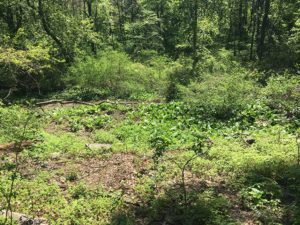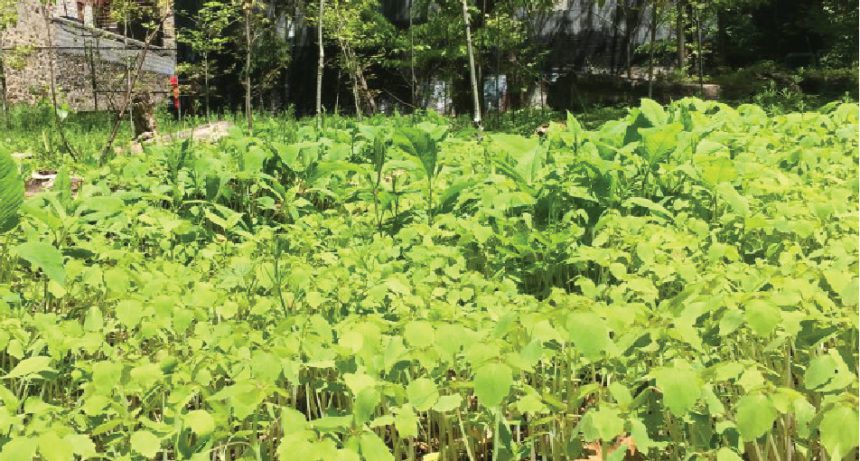By Alex Byrne
A part of the mission of the newly formed Van Cortlandt Park Alliance is to preserve and support the ecological value of Van Cortlandt Park. In this effort we value biodiversity, and the ecosystems that function to promote it. The world-class urban forests of VCP are still developing and require the management of both the human and forest tendency towards disturbance.
Before merging, collectively with the support of a DEC Urban and Community Forestry Grant the VCP Conservancy and Friends of VCP worked to restore native plant communities within forest canopy gaps. These areas are defined on the basis of lack of canopy cover, and typically have been invaded by a number of invasive plants. Like any process, over the last year we learned and re-learned a lot about canopy gaps, here are just a couple of the ideas we began to notice as we worked to restore VCP canopy gaps:
1) Gaps can be hard to define: Canopy gaps vary in their size, history and plant community. Therefore the term canopy gap actually represents a gradient of different classifications. Progress in the study of VCP Canopy gaps would benefit from a classification system based on a set of parameters like size and history of restoration.
2) Root management is an important component: Plant communities result from interactions between the above and below ground. Invasive vines such as Porcelain Berry (Ampelopsis brevipedunculata) that have invaded lowland forest canopy gaps have extensive root networks. We see a need for more research to disentangle the interactions between disturbance and biomass removal. Our work indicates that minimal frequency; low intensity soil/root disturbance has an initial positive effect on the generation of native plants within the gaps.

3) Planting a food web: Plantings need to consider both the local soil conditions as well as the local assemblage of animals in the area. The rich diversity of insects observed within Canopy gaps prompted us to begin to think about restoration at the scale of the entire community with the ultimate goal of supporting whole food webs, not just single plant populations. Future research of the VCPA should include both investigating pollinator diversity within canopy gaps as well as begin to connect our plantings with the biodiversity of the park.
4) Seeding, a viable method: Seed predators are referred to as Granivores. This includes everything from small mammals, large mammals, birds, earthworms and a large number of invertebrates. Despite the large potential for granivory, we showed that seeding in canopy gaps to be a viable method in the initial reduction of the re-emergence of invasive plants. Therefore, we suggest future canopy gap restoration activities take advantage of the use of seed, with higher seed counts correlated with higher emergence. Research into the influence of granivory on seed based restoration would prove very useful for NYC forests as a whole.
We will be hosting two more Canopy Gap Projects this spring on Saturdays June 8th and 15th both will meet at 10am in front of the Garden & Compost Site (enter the park at Broadway and Mosholu Avenue). We hope you will join us to learn more and help out with our restoration efforts.


